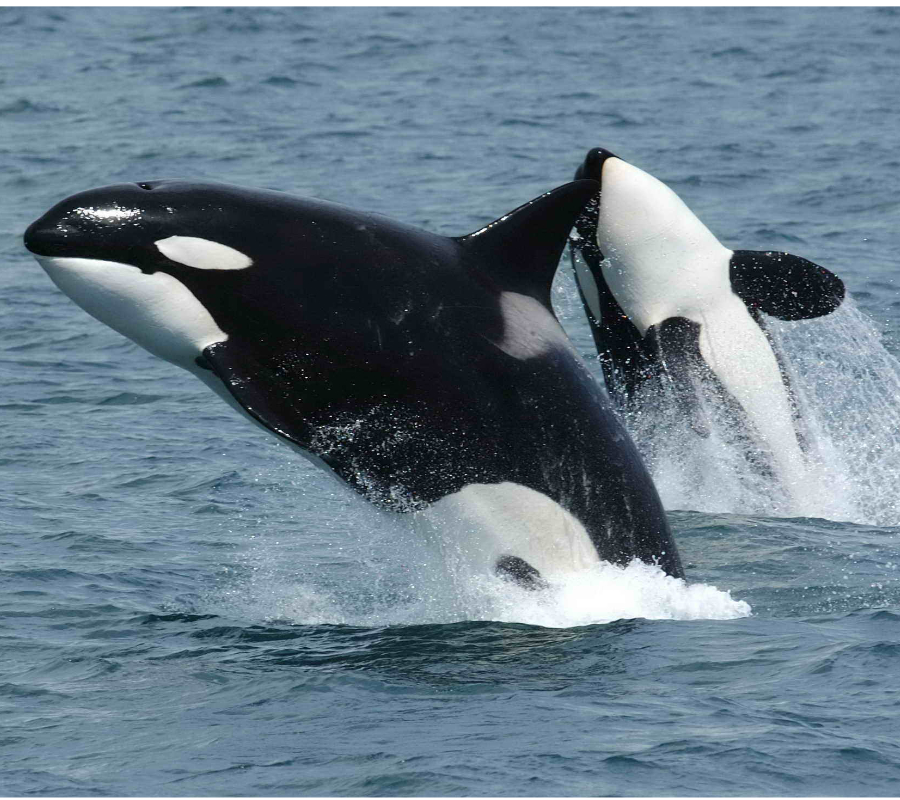Orcas are facing a new problem: starvation. There is a rising concern about the future and life conditions of orca populations frequenting the Washington State waters, according to an announcement made by the Center for Whale Research on Friday.
There is not enough food for orcas, which is key to understand why they are dying. A 23-year old female whale known as J28 or “Polaris,” and her 10-month-old calf might have died recently, while a 42-year-old female remains missing. These three deaths have dropped the whale population in Washington to just 80, the lowest number in decades.

Killer whales are starving
The southern resident killer whales represent the smallest resident community of whales within the Northwest portion of North America Ocean. They are listed as endangered by the U.S Fish & Wildlife Service, and therefore they were protected by the Endangered Species Act in 2005.
There are only 80 whales among this community; the oldest killer whale is believed to be Granny or J2, a female orca that was born in 1911 approximately, meaning she is 105 years old.
The population of “fish-eating orcas” is decreasing because of different factors including climate change and other human activities.
Marine biologists say that the recent deaths are caused by lack of food for the whales. Several cases of missing orcas have been noticed in the waters of Washington in the last census.
Killer whales eat salmon, especially the Chinook salmon, which is a large and fat fish. However, the salmon population has also declined.
The census made on July 1 by the Center for Whales Control suggests that a 42-year-old female orca has died. And now it is believed that a J28, another female has died alongside its calf.
According to the Center’s senior scientist Ken Balcomb, the orcas, especially the mothers and their calves, are dying because they don’t find enough food.
Balcomb has been closely studying and monitoring whales since the 70s when he made his fist whale census. He’s been tracking the movement, birth, development and death of this community of whales ever since.
Calves are at risk
The young orcas need proper resources to survive and develop. Their opportunities are reduced when they lose their mother at a young age. The death of a mother whale dooms the calves since they need protection. Researchers now want to prevent future similar cases from happening.
J28’s 10-month-old calf is known as J54 or Dippler. It was born in December. Though its dead is not official yet, scientists are concerned about J54 due to her mother’s death. In the last month, the calf had been showing signs of emancipation. At its age, it also needs its mother’s milk.

Scientists call to breach the dams to save the killer whales
Statistics show that the the killer whale population in Puget Sound has worryingly declined. Two decades ago, there were hundreds of killer whales and now barely 80.
Scientists believe they can help saving whales from starvation by breaching the dams to enable salmon to enter into the habitat of the orcas. The specialists are asking the authorities to let loose the four dams on the Lower Snake River.
“We know what we need to do, feed them,” Balcomb said at a news conference on the Seattle waterfront surrounded by supporters who held signs calling for the dams to be breached.
Not everyone agrees with that action. Some say that the dams shouldn’t be removed because they provide low-cost hydroelectric power, thus playing an important role in the economy of the region. However, biologists and environmentalists say that measures need to be taken to save the starving orcas.
“There’s no reason these dams couldn’t be breached,” said Jim Waddell, a retired engineer who spoke at the Seattle Conference.
In March, in a long-running lawsuit, the U.S. District Judge Michael H. Simon in Portland refused to apply the federal government plan for offsetting the damage that the dams in the Columbia River Basin pose to salmon.
The judge asked the government to figure out a better plan by March 2018. He expressed that he couldn’t impose actions to the government, but he suggested a proper analysis, under the Federal law, that envisions reasonable alternatives for breaching, bypassing or removing the Lower Snake River dams.
Source: The Himalayan Times

Oceans all over the world are overfished, 90% of the life in the oceans is gone gone gone. The fishermen want the seals dead, because they see them as competition for dwindling fish populations. The seals have to go further and further from shore to find fish to eat, and the young ones often can’t make it and die. When the seals are few, the whales will be fewer. People don’t need to eat fish to be healthy, the oceans are horribly polluted and fish are too high on the food chain. Let the oceans recover before it’s too late. I am so ashamed to be part of this human population that is driving all the animals to extinction due to ignorance, gluttony and greed.
The human race should be embarrassed. It has become the biggest murderer on earth for profit. A true “gun for hire” should be the legacy of humanity on this beautiful earth!